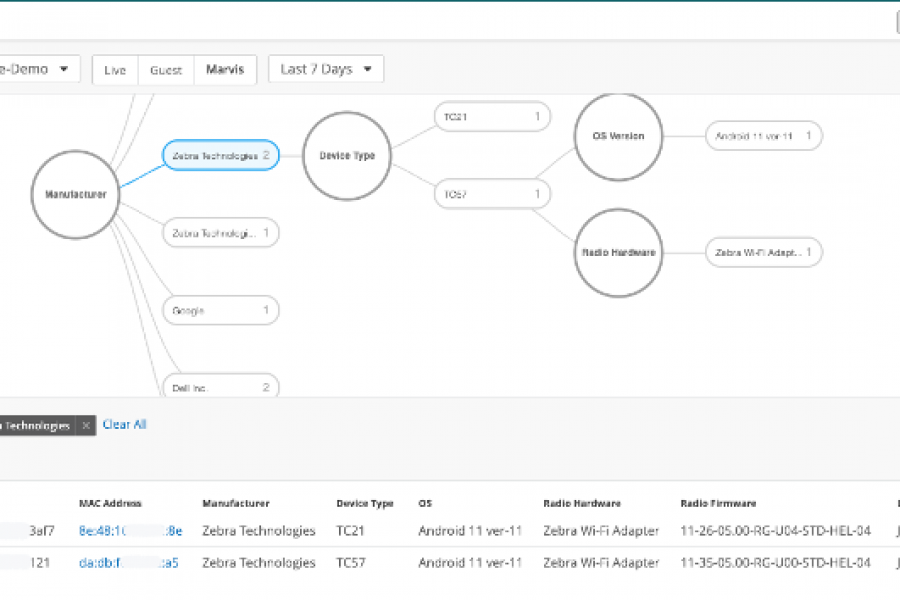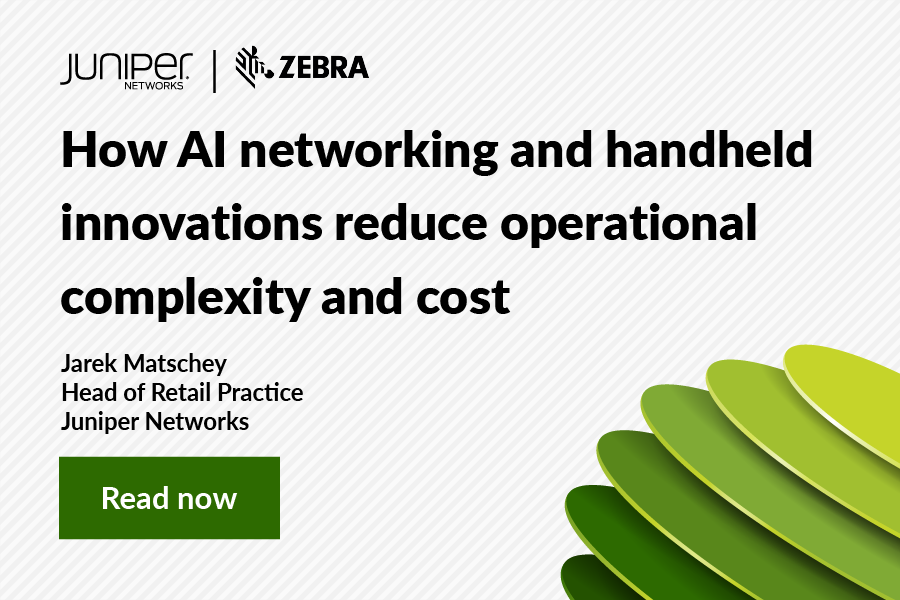As device, application, and bandwidth demands continue to soar, Wi-Fi 7 is here to help you meet the challenge. For enterprises, higher education, healthcare, and retail, this next-generation 802.11 standard offers higher throughput, lower latency, extended range, and greater reliability than previous Wi-Fi versions.
For IT leadership and your teams, Wi-Fi 7 also brings a new set of questions as the marketplace races to harness its full potential:
- When will we see widespread adoption?
- What do you need to know about setup and ongoing management?
- What should you do to prepare your infrastructure for Wi-Fi 7?
- What steps can you take to stay resilient and meet future demands for upcoming Wi-Fi generations?
It’s a matter of when, not if, you’ll need to support next-gen user devices, so you need to be ready. Read on for valuable insights regarding the promise of Wi-Fi 7 and why now is a critical time to begin your architecture modernization journey to turn the corner on management complexity.
Unleash the power and scale of Wi-Fi 7
Wi-Fi has become a business-critical utility, arguably as important as running water and electricity. Users expect it to be always available, consistently reliable, and fully capable of securely supporting virtually any device and application. With many key advancements, Wi-Fi 7 is poised to significantly enhance scale, user experiences, efficiency, and technological possibilities. The Wi-Fi CERTIFIED 7™ standard includes the following new features:
- 320 MHz super wide channels: Available only in the 6 GHz band, these channels provide twice the throughput of Wi-Fi 6, enabling multigigabit Wi-Fi device speeds
- Multi-Link Operation (MLO): Supports more efficient load balancing of traffic among links, resulting in increased throughput and enhanced reliability
- 4K QAM: Achieves 20% higher transmission rates than Wi-Fi 6’s 1024 QAM, offering greater efficiency
The speed and performance of Wi-Fi 7 is expected to drive the next surge in mobile and IoT devices, application proliferation, and new use cases that demand multi-gigabit speeds. This includes high-definition video, immersive 3D training, hybrid work environments, industrial IoT, automotive applications, and Emergency Preparedness Communication Services (EPCS).
When should you start your Wi-Fi 7 journey?
Final ratification of Wi-Fi 7 is targeted for Q4, 2024. However, we don’t expect widespread adoption for two to three years. But the question remains: As a CIO, CTO, or network architect, what should you be focused on in the meantime?
Although Wi-Fi 7 introduces new innovations, it also brings many similar management challenges that we’ve seen with previous generations. Notably, the tuning and ongoing management requirements are expected to be more demanding as clients utilize multiple link operations with 320 MHz channels in high-density environments.
For organizations running legacy networks designed for earlier Wi-Fi eras, the jump to 6E, 7, and beyond presents a transformative turning point in network management. It’s an opportunity to adopt a modern, resilient architecture capable of scaling to meet evolving and growing demands.
Now is the time to simplify
Users are demanding better connectivity as networks are supporting more devices and applications than ever. And this trend will only continue to grow. Meanwhile, digital transformation pressures are reshaping networks from the data center to the edge, driving exponential growth in data volumes.
In the face of these challenges, wireless controllers, co-located data centers, and siloed technology stacks add to network complexity, making legacy networks difficult to manage and limiting visibility into user experiences. For Wi-Fi 7, legacy architectures will act as bottlenecks, limiting network potential and burdening your team with unnecessary complexities.
Digital transformation requires a modern network architecture that is both scalable and agile. Today’s architectures should support exceptional mobile experiences and enhance operational efficiency while masking the increasing complexity of network infrastructure.
Artificial intelligence (AI), machine learning (ML), and automation are revolutionizing enterprise networking and enabling many organizations to significantly simplify and optimize network operations.
That’s why, before or during your transition to Wi-Fi 7, the most important steps to simplify operations and unlock efficiencies for your overburdened IT team are to:
- Update your legacy network
- Move to the cloud
- Secure users and devices effectively
- Harness AIOps capabilities
“In the AI era, enterprise networking has never been more important, or more of a challenge to optimize. From reducing the complexity of deploying and managing networks to assuring high-quality user, device, and application experiences to staying ahead of ever evolving cyberthreats, advancing the connectivity strategy of enterprise campus and branch networks is a key priority for organizations. AI-enhanced network operations (AIOps) platforms can be a powerful tool for overcoming these challenges. Key fundamentals to a successful AIOps solution include being AI- and cloud-native, leveraging a platform-based approach that extends across wired and wireless capabilities, and having security natively built in. Recent enhancements to Juniper’s AI-Native Networking Platform continue to make important advancements to AIOps capabilities for enterprise network management.”
– Brandon Butler, Research Manager, Enterprise Networks, IDC
See the possibilities
Juniper customers who have taken the steps above and simplified operations using our cloud-native AI-Native Networking Platform have experienced tremendous benefits. For example, AIOps provides real-time visibility into client connections, enabling IT teams to make faster, more accurate decisions, and respond to network and system incidents more quickly. An AI-Native platform can reduce the complexity of deploying and managing networks and assure high-quality user, device, and application experiences—all while helping you stay ahead of ever-evolving cyberthreats. Key benefits include:
- Elimination of up to 90% of networking-related trouble tickets through automation
- Up to 85% faster deployment times
- Up to 85% in OpEx savings
In addition to the performance and efficiency benefits that Wi-Fi 7 itself offers, these types of gains will be crucial to staying competitive and meeting ever-changing demands.
Start your journey to Wi-Fi 7 on the right foot
It’s important to remember that AI and automation in networking are not panaceas. They must be done right and based on long-term reinforced learning to maximize benefits. While today’s marketplace is full of “AI washed” solutions that sound promising, they can’t deliver the necessary visibility or self-driving actions needed to keep your Wi-Fi 7 network humming. To get the maximum benefits from Wi-Fi 7 and beyond, selecting the right architecture is key.
In our September 4 Special Edition Demo, “Unleash the power and scale of Wi-Fi 7,” we provided an overview of key Wi-Fi 7 advancements and insights into getting your architecture right.
Juniper’s “Wizards of Wi-Fi,” featuring Peter Mackenzie, Director of MQ Training Services, and Wes Purvis, Product Director at Juniper, shared their expertise and answered questions live.


